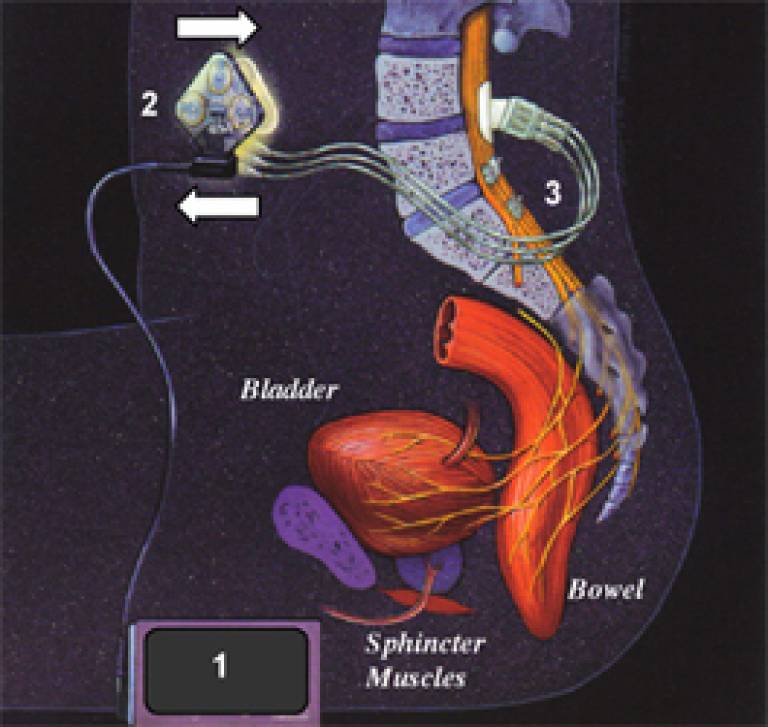New hope for spinal cord injury
25 November 2005
An interdisciplinary UCL research team have been awarded over half a million pounds by the Engineering & Physical Sciences Research Council to develop a novel device to restore multiple pelvic floor function in people with Spinal Cord Injury (SCI).
 Professor Michael Craggs (UCL Urology), Professor Nick Donaldson (UCL Medical Physics) and Dr Andreas Demosthenous (UCL Electrical Engineering) will bring together their expertise to help correct this most debilitating condition.
Professor Michael Craggs (UCL Urology), Professor Nick Donaldson (UCL Medical Physics) and Dr Andreas Demosthenous (UCL Electrical Engineering) will bring together their expertise to help correct this most debilitating condition.
Spinal cord injury causes devastating changes to many of the normal functions of the body, most obviously paralysis of the limbs. But other symptoms of spinal cord injury such as the associated loss of pelvic floor function can be much more debilitating for a person. The social stigma of double incontinence, the inconvenience of spasticity and the medical dangers of pressure sores are problems that require life-long treatment.
While advances are being made in neural repair methods for spinal cord injury, which may one day help to rehabilitate pelvic floor function, these are still a long way off. So for the tens of thousands of patients with a chronic injury in the UK the development of this new device could make a significant difference to their quality of life.
To date, the most successful device for functional restoration in spinal cord injury has been the well-known Brindley implant, which stimulates motor nerves to empty the bladder. Despite around 3,000 people being implanted with such stimulators during the last 25 years, the implant has the disadvantage that in order to prevent incontinence some sensory nerves have to be cut.
Instead of cutting nerves, the UCL team now hope to produce an implant that will preserve and utilise these nerves in a new approach for controlling the bladder, bowel and other functions. The team, through their previous research experience, has demonstrated that feedback control is very useful in preventing urinary incontinence. This technique, commonly known as 'conditional neuromodulation,' also improves bowel capacity and suppresses spasm and spasticity. In addition to these benefits, stimulating the motor nerves will not only give efficient bladder and bowel emptying, but will also enable erections, and by stimulating the gluteal muscles, will reduce the likelihood of pressure sores over the buttocks.
The project will involve critical experiments to be carried out on volunteers with spinal cord injuries. Special-purpose integrated micro-miniature electronic circuits will be designed in conjunction with two leading British technology companies Finetech Medical Ltd and Zarlink Semiconductors Ltd to produce commercially available devices small enough for implanting into the body.
Image: 1 - digital external control unit with a transceiver and microprocessor for communicating both ways with an implant; 2 - bi-directional command signals sent across the skin by two-way radio transmission to and from the implant; 3 - implanted signal sensors and stimulating electrodes to provide, among other things, conditional control over the paralysed bladder, bowel and sphincter muscles.
 Close
Close

